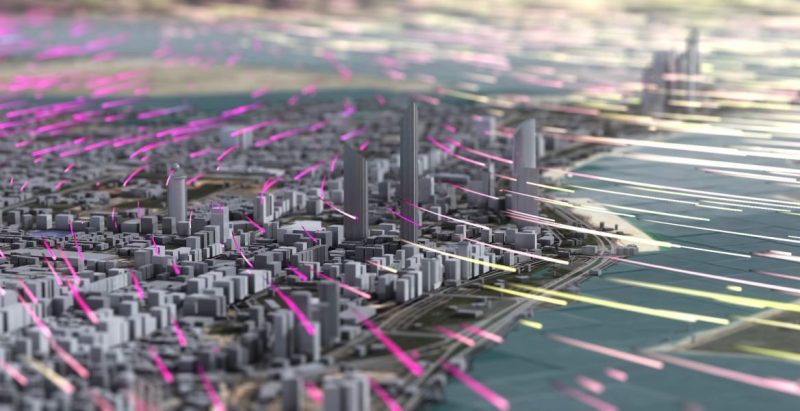Climate Tech Industry Embraces NVIDIA Earth-2 Blueprint For Enhanced Weather Prediction And Disaster Resilience

Categories :
NVIDIA launches the Omniverse Blueprint for Earth-2 to support faster, high-resolution, AI-powered weather forecasting. Climate tech companies, including G42, Spire, and JBA Risk Management, adopt the platform for enhanced disaster preparedness. The blueprint integrates GPU-accelerated tools like CorrDiff and FourCastNet for real-time, localised climate predictions.
As extreme weather events and natural disasters increase in frequency and impact, global climate tech companies are adopting NVIDIA’s Earth-2 platform and its newly released Omniverse Blueprint to develop more precise, energy-efficient weather prediction solutions. The initiative supports high-resolution, AI-powered weather analytics that empower enterprises, governments, and researchers to enhance disaster preparedness and climate resilience.
Over the past decade, climate-related weather incidents have cost the global economy nearly $2 trillion. NVIDIA’s Omniverse Blueprint for Earth-2 provides the technological foundation for addressing these challenges by offering advanced weather modelling capabilities, reference workflows, and GPU-accelerated AI tools that significantly reduce prediction times and increase model accuracy.
A technological leap for weather modelling
The blueprint integrates NVIDIA’s GPU acceleration libraries, a physics-AI framework, development tools, and NIM™ microservices including CorrDiff and FourCastNet. These microservices enable rapid deployment of weather forecast models, supporting organisations in transitioning swiftly from prototyping to production. CorrDiff focuses on downscaling coarse weather data into detailed, localised forecasts, while FourCastNet is designed for predicting global atmospheric dynamics over multiple weather and climate variables.
NVIDIA notes that these tools are already in use by weather technology firms, research institutions, and public agencies for deriving insights and mitigating the risks of severe weather events. According to Jensen Huang, founder and CEO of NVIDIA, “We’re seeing more extreme weather events and natural disasters than ever, threatening lives and property. The NVIDIA Omniverse Blueprint for Earth-2 will help industries around the world prepare for — and mitigate — climate change and weather-related disasters.”
Early adopters: G42, spire, and JBA risk management
Among the early adopters of the blueprint are climate tech company G42, satellite data firm Spire Global, and flood risk specialist JBA Risk Management. These organisations are leveraging the blueprint’s AI capabilities to build high-performance, scalable weather analytics systems.
G42 integrates components of the blueprint with its proprietary AI-driven forecasting models to support the UAE’s National Center of Meteorology. Andrew Jackson, CEO of Inception, a G42 company, explains, “G42 is advancing AI-powered forecasting to help governments and enterprises strengthen resilience against extreme weather in a rapidly changing world. Using high-resolution weather and climate modelling, we are transforming how organisations anticipate and respond to severe weather conditions with precision and speed.
Building on NVIDIA’s CorrDiff model, we have developed a custom AI-driven system that downscales coarse weather data into hyper-local forecasts, enabling faster predictions at an unprecedented scale. Combined with the Earth-2 Blueprint, this technology equips decision-makers with actionable intelligence to protect communities, safeguard infrastructure and plan for a more resilient future.”
Spire Global employs AI tools from the blueprint to develop forecasting products that incorporate its own satellite data, delivering medium-range and sub-seasonal forecasts up to 45 days in advance. These new models, powered by NVIDIA GPUs, achieve speeds up to 1,000 times faster than conventional physics-based models, allowing Spire to generate large-scale ensemble forecasts that offer a wider range of potential weather outcomes.
Broad ecosystem adoption and strategic collaborations
NVIDIA’s Earth-2 initiative is gaining traction across the climate tech ecosystem. Companies exploring or adopting the platform include Ecopia, ESRI, GCL Power, OroraTech, and Tomorrow.io. These firms are combining the Earth-2 platform with proprietary data and domain-specific applications to create tailored weather intelligence systems for disaster risk reduction, urban planning, green energy, and more.
ESRI, a geospatial analytics leader, is working with NVIDIA to connect its ArcGIS platform with Earth-2. OroraTech is also considering integrating its thermal and wildfire monitoring data with the Earth-2 blueprint. Meanwhile, Tomorrow.io contributes near-real-time satellite data to support NVIDIA’s creation of a digital twin of Earth, which is vital for training, inference, and reinforcement learning of next-generation AI climate models.
Generative AI for climate resilience
The Earth-2 platform distinguishes itself by incorporating generative AI models into climate tech. CorrDiff, now accessible as a NIM microservice, offers a substantial performance improvement over CPU-based systems, delivering high-resolution forecasts up to 500 times faster and with 10,000 times greater energy efficiency.
Software developers can use the Omniverse Blueprint for Earth-2 to create AI-augmented weather applications, visualise global conditions, and render geospatial data using NVIDIA RTX™ technology. The platform utilises OpenUSD-based 3D workflows, enhancing collaboration and interoperability across simulation environments.
High-performance compute infrastructure
NVIDIA backs the blueprint with its DGX™ Cloud, providing full-stack acceleration for climate modelling. The platform operates on NVIDIA DGX GB200, HGX™ B200, and OVX™ supercomputers to deliver rapid simulation and visualisation of global weather dynamics, positioning it as a transformative solution in computational meteorology.
About NVIDIA
NVIDIA (NASDAQ: NVDA) is the world leader in accelerated computing. Founded in 1993, the company has transformed visual computing and expanded its reach into data centres, AI, and simulation. Its technologies power innovations across sectors, including gaming, healthcare, robotics, and climate science.
The company’s recent advances in AI-driven modelling and simulation have positioned it at the forefront of climate technology innovation. Through platforms like Earth-2 and Omniverse, NVIDIA enables enterprises to build intelligent systems that visualise, forecast, and respond to real-world environmental challenges with unprecedented speed and accuracy.
Shikha Negi is a Content Writer at ztudium with expertise in writing and proofreading content. Having created more than 500 articles encompassing a diverse range of educational topics, from breaking news to in-depth analysis and long-form content, Shikha has a deep understanding of emerging trends in business, technology (including AI, blockchain, and the metaverse), and societal shifts, As the author at Sarvgyan News, Shikha has demonstrated expertise in crafting engaging and informative content tailored for various audiences, including students, educators, and professionals.










